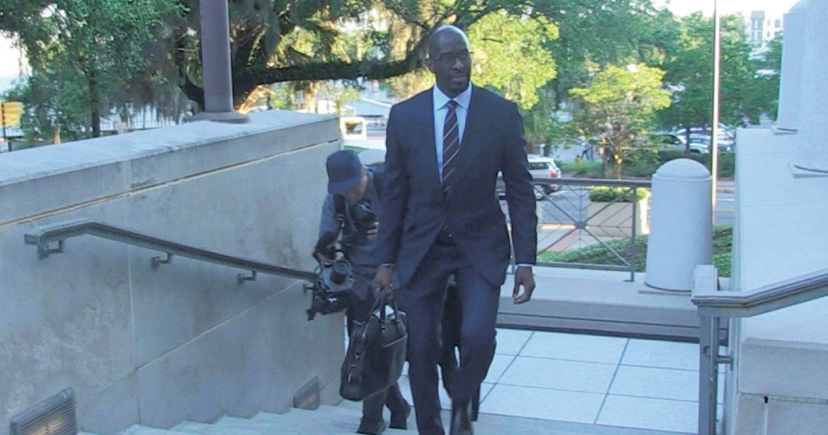St. John the Baptist’s June announcements include requests for help cleaning out two buildings located across the street and kitty-corner from the Catholic church on Broad Street. The parish is preparing to hand over the keys to a 71-year-old former school and a grand old house made from Kasota stone.
As 8 a.m. Mass let out on last Sunday, worshippers paused to visit near the church’s main doors. When asked if they’d ever been inside the older, historic property, nine out of 10 said they weren’t even sure where the Palmer House was located.
“That’s because it’s a rectory — our priest’s home — and they haven’t heard the whole story,” said Jaci James.
She described the two-story house’s location as hidden.
Although the Palmer House is less than a block away from St. John’s front door, it’s blocked from view by the parish center building. When the house was built in 1861, the surrounding landscape was open and expansive. The original owner, Morton S. Wilkinson, was able to look out over the river valley to the west and passers-by enjoyed viewing his impressive home.
Today, the house’s rear facades are visible only to pedestrians who walk on the property’s west side. Curious parishioners and community members will be able to take self-guided tours of the house later this week.
James is one of the coordinators for the transition of the Palmer House and school building to its new owner, Max DeMars.
Lots of volunteers have signed up to help with packing up boxes with items from the buildings, said James. The next step will be to determine which used school and household items will be kept and what should be set aside for a public rummage sale in July.
Rev. John Kunz, who serves as St. John’s priest, lived alone in the Palmer House for several years. One of the house’s several bedrooms was reserved for the bishop during his occasional stays in Mankato.
Kunz found the rectory a beautiful place to call home. During a reporter’s tour of Palmer House, he pointed to a large sunroom, massive fireplace and winding staircase. But he recently moved to a low-maintenance townhome from the large residence that once housed his parish’s first school classrooms.

Rev. John Kunz stands near the original fireplace in the historic Palmer House. Kunz said its Kasota stone walls help insulate the structure. Its interior is warm in the winter months and cool in the summer, he said.
“It was just more room than one person needs.”
For several years during the 1940s, members of the teaching order School Sisters of Notre Dame lived in the Palmer House. Sister Mary Kay Ash, archivist for Our Lady of Good Counsel, said that most of the women who taught there have have died; however, at least one retired Palmer House teacher survives. She resides on the hill in Mankato.
Overcrowding in the Palmer House led the parishioners to build a new school nearby in 1951. Eventually, St. John’s students joined with children from Mankato’s other parishes to study in Loyola’s classrooms.
The upcoming sale closure Aug. 1 will not be the first time St. John’s has sold the two buildings. In the late 1970s and through the 1980s, Minnesota Valley Action Council took over both buildings, which the non-profit used as administrative offices.
“Our weatherization department was in the Palmer House,” said John Woodwick, who served as MVAC’s executive director for 18 years.
His regional organization had been looking for a central home and the Broad street properties fit the bill. A board member from Le Sueur County offered his farm as collateral. MVAC honors his memory by presenting an annual Roger J. Wolfe achievement award.
The agency later moved its offices to the Nichols building, which was at the site of VINE Adult Community Center. MVAC’s offices are now at Mankato’s hilltop area.
The two Broad Street properties then came under the ownership of a 100-member Assembly of God Church. Worship services took place in the old school building.
Dan Tish, a church board member at the time, was tasked with many of the repairs to the Palmer House.
At some point, a squatter damaged a downstairs wood floor by lighting up the indoor fire pit he’d created. College students who rented out rooms contributed to the building’s wear and tear.

The Palmer House’s original kitchen bun warmer may be viewed during self-guided tours. The apparatus is attached to the home’s steam boiler system and was used to keep baked goods stay delicious.
“It was in rough shape when we took it over. We did a lot of the renovations to make the house livable for our pastor, his wife and their three daughters; I’m sure the Catholic church did (renovations), too.”
The Assembly of God congregation eventually outgrew its Broad Street facilities and both buildings were sold back to St. John’s.
“In January, we celebrated our move from that location 20 years ago,” said Hillside Church Associate Pastor Luke Ambrose.
The goal for St. Johns’ repurchase of the two buildings was to use the structures for parish events and to help the community by providing needed space for various functions. Palmer House was updated — with the help of volunteer parishioners and local vendors — and became the parish rectory.

The Palmer House as it looked in 1899, when the home offered an expansive view of the river valley to the west. In 1951, views of the structure’s main facade became blocked by St. John the Baptist Catholic Church’s newly-built school. The house’s rear facades now are visible only to pedestrians who walk on the property’s west side.
The former school’s classrooms were made over for use as for St. John’s weekly faith formation activities, Loyola graduation parties and confirmation classes. The building’s top floor was once utilized by School District 77.
A non-profit that serves youths, MYPlace, currently is a building occupant.
Director Erin Simmons said she’s met with DeMars, who’s assured her MYPlace will not have to vacate when the sale is completed.
“I’m a representative of a group of people who have purchased the property. We have no real development plans at this time,” DeMars said.
A native of Mankato, he is familiar with streets surrounding St. John’s and the Palmer House.
“I grew up skateboarding past the place.”
His group of purchasers is in the early stages of planning uses for the property, DeMars said.
“At the end of the day, we want it to be positive outcome. We want to contribute to the Lincoln Park neighborhood.”











